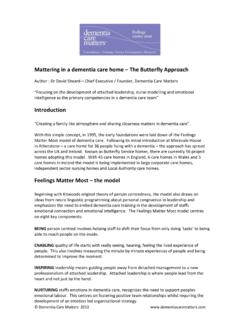Transcription of Bilingual Education: Why Culture Matters - Training
1 Bilingual education : Why Culture Matters 1 Bilingual education : Why Culture Matters Mara Krilanovich May 4, 2005 Language and Culture Dr. Galang Bilingual education : Why Culture Matters 2 Bilingualism is fast becoming an important part of the Culture in North America as immigration continues to increase. According to the Department of Homeland Security (2002), the vast majority of immigrants are from Mexico followed by the Philippines. California is receiving most of the immigrants from around the world (Department of Homeland Security, 2002). As the diversity of the population increases, the need for Bilingual education and cultural integration also increases. An integration of Culture into Bilingual education programs is crucial to the success of those programs and to the success of the students in those programs. Bilingual programs can also serve as the basis for easing the cultural transition for both native and immigrant populations.
2 Outside of the United States, bilingualism is common throughout the world. There are a wide variety of ways that people learn to be Bilingual . There are also a variety of utilities for languages, and many ways societies value languages (Institute of Medicine Staff, 1998). There are two forms of bilingualism that are commonly referred to as additive and subtractive . In additive bilingualism, the first language is secure, and the second language serves as enrichment. French immersion programs in English speaking countries, such as Canada, are an example of additive bilingualism. In direct contrast, subtractive bilingualism describes the cases in which the first language is less valued and considered non-permanent. It is assumed that the language learner will dispose of the first language in favor of the second language, which is that of the dominant Culture . The majority of immigrants to English-speaking countries, including the United States, Canada, and Australia, experience subtractive bilingualism.
3 They are placed in a situation where their first language is not valued and is perceived to have little utility in the greater society. Therefore, their native language skills denigrate over time, Bilingual education : Why Culture Matters 3 and English becomes their dominant language (Institute of Medicine Staff, 1998). Subtractive bilinguals suffer even more: if the loss of their first language occurs early in life, they perform less well on many cognitive measures (Ovando, Collier, and Combs, 2003). The value that a society places on language can have a profound effect on bilinguals. Research into the effects of bilingualism on cognitive abilities has found that bilinguals have greater cognitive ability in information processing (Hamers and Blanc, 1989). French research that was controlled for age, sex, and socio-economic level found that bilinguals scored higher on measures of intelligence than monolinguals.
4 The researchers of that study posited that this difference is due to the greater cognitive flexibility and ease in concept formation found in bilinguals as a result of the navigation of two language systems (Hamers and Blanc, 1989). This would lead us to believe that Bilingual education would not only benefit immigrants, but all students, as they would likely perform better in their academic careers. Despite societal resistance, Bilingual programs continue to exist in United States and are an important part of the early education of immigrants, particularly Latino and Asian immigrants in California (Valdivia, 2000). The majority of programs in the United States are found in California, Texas, and New York (Howard and Sugarman, 2001). The typical students in those programs are low-income, native Spanish speakers (Howard and Sugarman, 2001). Other countries, including those in Latin America, offer Spanish and English Bilingual programs.
5 In contrast to the United States, these Bilingual programs are of cultural value and mainly available to those of high socio-economic status (Valdivia, Bilingual education : Why Culture Matters 4 2000). This author is personally aware of several of these types of programs in Medell n, Colombia. One of the major issues that Bilingual education faces in the United States is the low value placed by the society on the immigrant s native language, be it Spanish, Chinese, Vietnamese, or any other non-English language. Students in the past have been punished for speaking those languages in favor of English (Calderon and Carreon, 2000; Valdivia, 2000). That English-only attitude persists in the United Sates today despite the growing need for bilinguals in business contexts. One only has to look at the job postings on any given day to see that individuals with verbal and written fluency in multiple languages are desired in the workforce.
6 One example of the society s lack of value of Bilingual programs is codified in the passage of California s Proposition 227 in 1998. The aim of that legislation is to essentially dismantle Bilingual education programs in favor of sheltered English immersion. According to that legislation, the period of time students are to spend in a sheltered English immersion program is not to exceed one year (de Cos, 1999). In contrast, the most successful Bilingual programs have instruction in the native (50%) and target (50%) languages for at least four years (Calderon and Carreon, 2000). There are two opposing Bilingual program foci: enrichment or remediation. Two-way Bilingual programs, also referred to as dual-language programs, are often focused on enrichment and integrate language-minority and language-majority students in both languages (the most common are Spanish/English programs) (Calderon and Carreon, 2000).
7 Programs focused on remediation in the United States are geared toward building English skills and eventually disposing of the student s primary language in favor of Bilingual education : Why Culture Matters 5 English (Ovando, Collier, and Combs, 2003). These remediation type programs appear to be more prevalent in the United States. There are benefits to students enrolled in Bilingual education programs that are focused on enrichment. Students who participate in Bilingual programs that maintain their native language appear to have better success throughout in their academic careers than students who are forced to abandon their native language in favor of English immersion (Valdivia, 2000). Bilingual education programs benefit immigrant students in playing catch-up with their monolingual English speaking peers as they are provided with instruction across the curriculum in their primary language (Ovando, Collier, and Combs, 2003).
8 This may be particularly beneficial in high school where more emphasis is placed on each core subject matter . One study of a two-way Bilingual (Spanish/English) high school program found academic benefits for both native speakers of Spanish and native speakers of English. Both groups of students reported feeling smarter as a result of learning two languages (Lindholm-Leary and Borsato, 2002). While the research on Bilingual programs has primarily focused on the cognitive, academic, and socio-cultural benefits for students of minority status, little has been presented on the benefits to language majority students. Students of the ethnic and linguistic majority can benefit from Bilingual programs. In addition to the cognitive benefits mentioned previously, empirical evidence suggests that the more students are informed about and in contact with other cultures, the less prejudiced they will be (Ovando, Collier, and Combs, 2003).
9 With this in mind, Bilingual education programs have the potential to affect positive social change. Bilingual education : Why Culture Matters 6 If children are to develop a positive sense of themselves and their Culture , Bilingual programs can be a key component of that process. Culture groups are defined by their distinctive features; language is one distinguishing feature that is important to cultural identity development and maintenance (Hamers and Blanc. 1989). By the age of six, children have formed a sense of cultural identity by which they categorize themselves as different (Hamers and Blanc, 1989). Bilingual programs that integrate the students Culture are particularly important for students of minority status. The relationship between bilinguality and cultural identity is reciprocal: bilinguality influences the development of cultural identity, which in turn influences the development of bilinguality (Hamers and Blanc, 1989, page 121).
10 Bilinguals can develop a multicultural identity by which they can adhere to the norms of both the dominant and minority cultures. Bilingual programs, if they value the student s first language, can play a role in positive identity development and the empowerment of language and ethnic minority groups (Ovado, Collier, and Combs, 2003). While there isn t a strong body of research that demonstrates a causal relationship between identity and academic achievement, there have been some positive relationships between these two variables drawn (Lockett and Harrell, 2003). Trujillo, et. al. (2003) agree that the integration of Culture and the students primary language enhances the development of identity. They go further to say that Bilingual programs are most effective when language and Culture are shared by both student and teacher. In other words, Chinese Bilingual students should be paired with Chinese Bilingual teachers.






